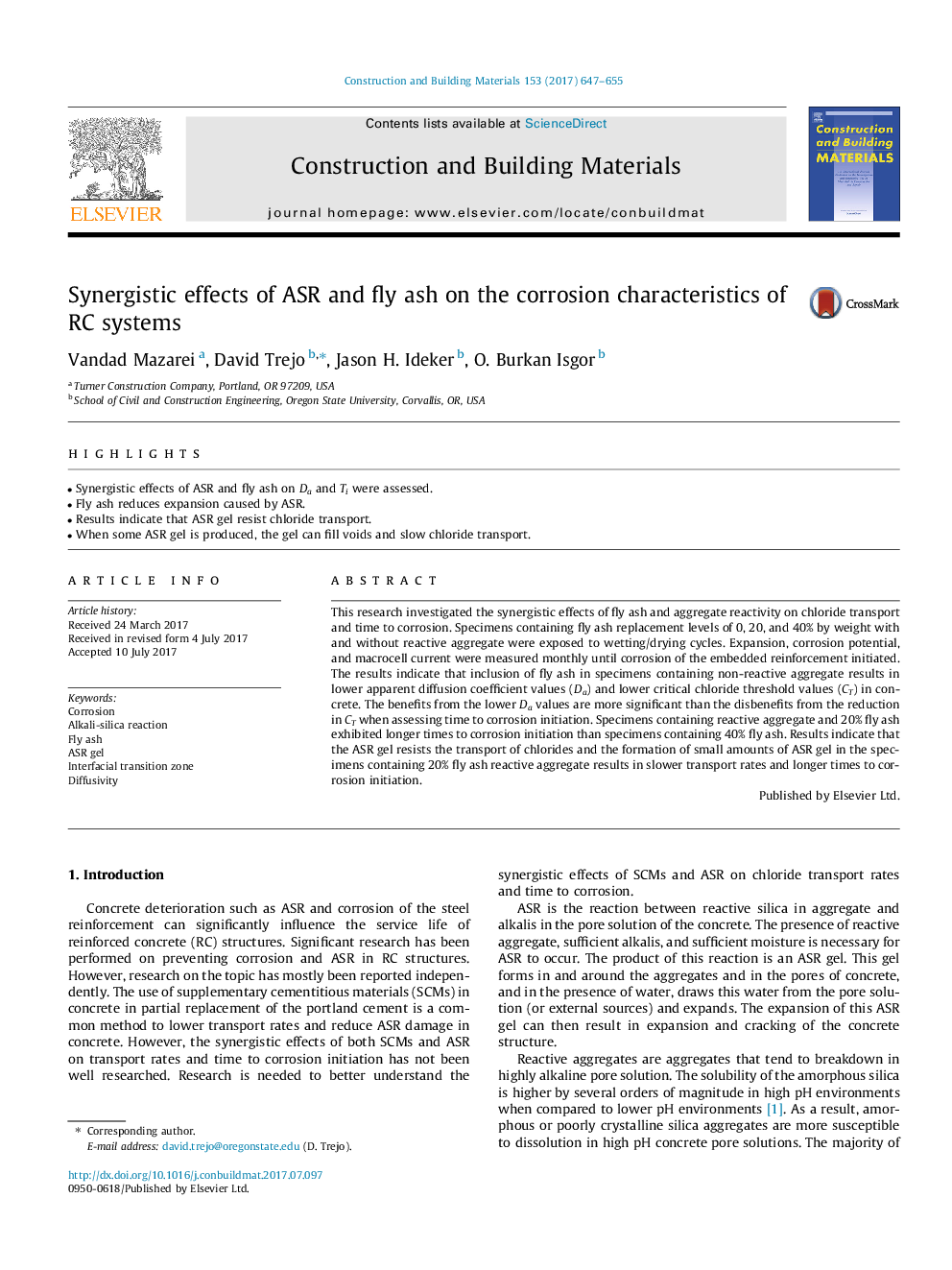| Article ID | Journal | Published Year | Pages | File Type |
|---|---|---|---|---|
| 4913011 | Construction and Building Materials | 2017 | 9 Pages |
Abstract
This research investigated the synergistic effects of fly ash and aggregate reactivity on chloride transport and time to corrosion. Specimens containing fly ash replacement levels of 0, 20, and 40% by weight with and without reactive aggregate were exposed to wetting/drying cycles. Expansion, corrosion potential, and macrocell current were measured monthly until corrosion of the embedded reinforcement initiated. The results indicate that inclusion of fly ash in specimens containing non-reactive aggregate results in lower apparent diffusion coefficient values (Da) and lower critical chloride threshold values (CT) in concrete. The benefits from the lower Da values are more significant than the disbenefits from the reduction in CT when assessing time to corrosion initiation. Specimens containing reactive aggregate and 20% fly ash exhibited longer times to corrosion initiation than specimens containing 40% fly ash. Results indicate that the ASR gel resists the transport of chlorides and the formation of small amounts of ASR gel in the specimens containing 20% fly ash reactive aggregate results in slower transport rates and longer times to corrosion initiation.
Related Topics
Physical Sciences and Engineering
Engineering
Civil and Structural Engineering
Authors
Vandad Mazarei, David Trejo, Jason H. Ideker, O. Burkan Isgor,
